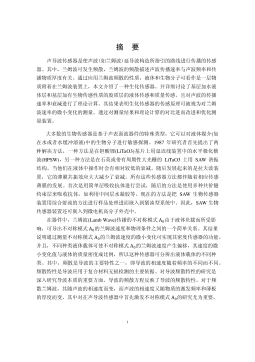英语专业口语课堂本族语教师话语互动特征研究
ii摘要教师话语指教师在课堂上从事教学和传播知识所使用的特殊语言,它有其自身的形式和互动特征。在外语课堂上教师话语的重要性,不仅体现在其对课堂的组织和管理功能,更体现为它是学习者习得语言的重要途径。随着我国高校英语教学改革的逐步深入,诸多院校开始起用本族语教师以提高学生(尤其是英语专业学生)的实际语言运用能力。目前,许多中国高校英语专业口语课堂实现了“外教化”。然而大学生能适应本族语教师的课堂吗?本族语教师能与中国学生良好相处并达到他们的期望值吗?本文作者旨在通过课堂观察对本族语教师话语特征进行分析,找出长处和不足,以帮助提高英语口语课堂的实际教学效果。作者在前人研究的基础上设计了模型,具体从...
相关推荐
-
10KV电网D-SCADA 系统信息采集与故障诊断研究与设计VIP免费

 2024-10-14 25
2024-10-14 25 -
方形吸顶散流器平送风等温射流特性研究VIP免费

 2025-01-09 7
2025-01-09 7 -
关于充液声导波传感器中频散兰姆波的研究VIP免费

 2025-01-09 10
2025-01-09 10 -
结合梁斜拉桥施工过程中考虑剪力滞影响的分析方法VIP免费

 2025-01-09 6
2025-01-09 6 -
空调房间热舒适性的数值模拟与实验研究VIP免费

 2025-01-09 7
2025-01-09 7 -
汽车前轮线控转向系统研究VIP免费

 2025-01-09 8
2025-01-09 8 -
输入分配型混合动力车辆动力系统控制策略研究VIP免费

 2025-01-09 7
2025-01-09 7 -
双馈风力发电系统的柔性并网控制研VIP免费

 2025-01-09 10
2025-01-09 10 -
污水处理厂污泥好氧堆肥发酵技术的试验研究VIP免费

 2025-01-09 7
2025-01-09 7 -
应用风室试验装置的风机性能VIP免费

 2025-01-09 8
2025-01-09 8
相关内容
-

汽车前轮线控转向系统研究
分类:高等教育资料
时间:2025-01-09
标签:无
格式:PDF
价格:15 积分
-

输入分配型混合动力车辆动力系统控制策略研究
分类:高等教育资料
时间:2025-01-09
标签:无
格式:PDF
价格:15 积分
-

双馈风力发电系统的柔性并网控制研
分类:高等教育资料
时间:2025-01-09
标签:无
格式:PDF
价格:15 积分
-

污水处理厂污泥好氧堆肥发酵技术的试验研究
分类:高等教育资料
时间:2025-01-09
标签:无
格式:PDF
价格:15 积分
-

应用风室试验装置的风机性能
分类:高等教育资料
时间:2025-01-09
标签:无
格式:PDF
价格:15 积分






